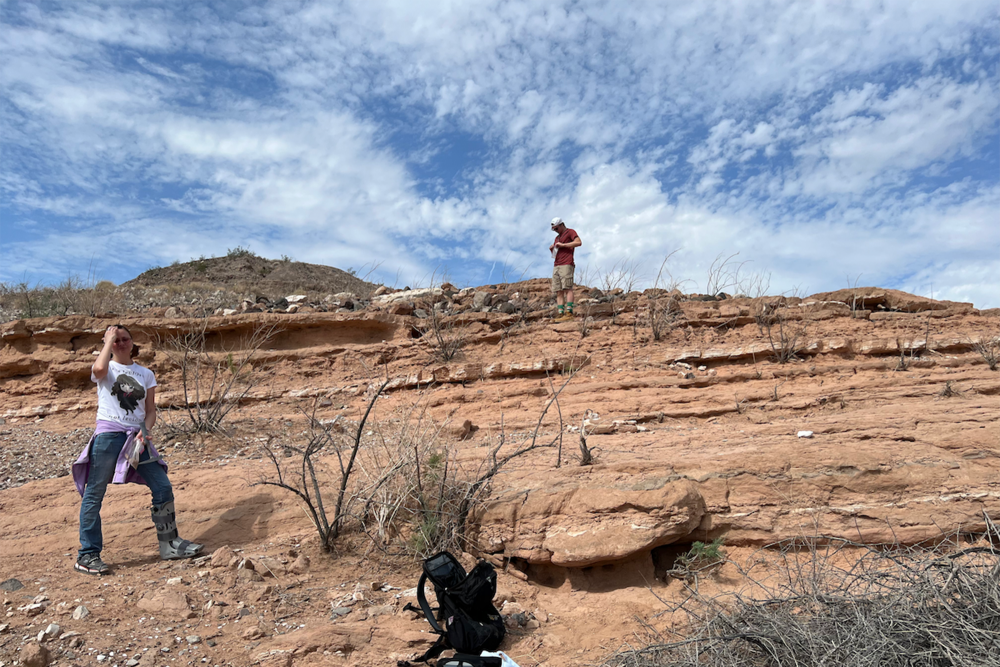
By Kiran N. Kumar
Explosive volcanic eruptions can endanger health and safety of even distant populations, warn experts.
A geologic study has discovered sedimentary rocks, submerged since the 1930s when the Hoover Dam was built on Lake Mead, are now exposed by low water in the lake. Attributing it to the volcanic rocks formed 12 million years ago, experts warn of imminent danger of volcanic ash in the area.
The sight of new rocks is an indication of the changing shoreline continuously affecting the American West with sunken boats and human remains, cautions the study undertaken by the University of Nevada, Las Vegas (UNLV).
It has also discovered that many of these rocks contain ash not from local volcanoes but far off ones that rained down as far away as Idaho, Wyoming, and California.
The team says explosive volcanic eruptions can have just as critical an impact on the health and safety of populations far from the source.
“Although the Las Vegas Valley is currently very far away from any active volcanoes, we can and will have ash from these volcanoes fall over Southern Nevada in the future,” said Eugene Smith, emeritus professor of geology at UNLV.
Even a couple of millimeters of ash that flows down the regions becomes incredibly heavy when wet and takes down power and telecommunications lines, blocks roadways and is easily re-mobilized by wind and water.
“When inhaled, the incredibly tiny but sharp glass grains in the ash can cause significant, chronic lung conditions such as silicosis,” he explained.
READ: NASA has a plan to save earth from Yellowstone supervolcano and generate electricity (August 23, 2017)
Moreover, ash, whether huge or moderate, can travel hundreds of miles, enveloping entire areas from one centimeter to several meters in thickness and just a couple of millimeters of ash is enough to cause all hurdles to humans, insisted Smith.
To prove their point, researchers used geologic mapping and collected samples of multiple ash layers at Lake Mead and from outcrops just south of Henderson.
When tested in their lab they found that the source of the ash layers from the samples are likely from outside Southern Nevada as the Las Vegas area, though experienced volcanoes over time, they stopped spewing ash around 12 to 13 million years ago.
The four main possible source areas that have produced distinctive ash, include the Snake River Plain-Yellowstone (SRP-Y) hot spot track, the Southwest Nevada volcanic field, Volcanoes of Walker Lane, and the Ancestral Cascades, according to the UNLV team.
In total, there are about 161 active volcanoes in the country, as per the US Geological Survey (USGS) and most of them are located in Alaska, where eruptions are an annual phenomenon.
Most of the ash layers the UNLV scientists found are between six and 12 million years old, but some are as recent as 32,000 years old — indicating that potential health threats from volcanic activity still remain writ large.
Volcanic ash can contain volcanic glass shrunk to microscopic size, debris, and crystals from the magma chamber that feeds the eruption. Depending on the force of the eruption, the ash, or ‘tephra’ as geologists call it, can travel hundreds or even thousands of kilometers from the volcano.
One such example in recent history was the catastrophic 1980 blast at Mount St. Helens in Washington, which leveled forests, dammed up Spirit Lake, and deposited ash over several states but was considered a minor eruption. If larger eruptions occur, they might deposit ash farther away and ruin infrastructure such as power lines, roads, railroads, and buildings, extending to far way states away from the source, the UNLV research team said.
Longtime Southern Nevada geologist Racheal Johnsen said, “The ash layers we study come from volcanoes long extinct. However, studying them has helped us determine just how often the Las Vegas area was inundated with ash over time and may help us prepare for future events from active volcanoes far from us.”



